Mechanical Trading Systems: Pairing Trader Psychology with Technical Analysis
$28.31
| Author(s) | |
|---|---|
| Pages |
240 |
| Format |
|
| Publication Year |
2005 |
Mechanical Trading Systems discusses the advantages and disadvantages of mechanical trading systems; the dangers in system development and how to avoid them; the optimal methods for back-testing trading systems; position sizing and other risk quantification tools; and methods of improving rates of return on investments without significantly increasing risk.
Author’s Introduction:
Chapter 1 defines mathematical technical analysis, distinguishes it from classical technical analysis, and shows the psychological reasons behind why it works. Chapter 2 looks at the two basic flavors of mathematical technical indicators: those attempting to capitalize on the market’s propensity toward mean reversion (i.e., oscillators), and indicators that profit from trending price activity (e.g., moving averages).
Chapter 3 examines trend-following trading systems and shows how even the most simplistic of systems can produce a respectable rate of return while enduring relatively moderate worst peak-to-valley drawdowns in equity. Chapter 4 looks at simple intermediate-term mean reversion trading systems.mChapter 5 explores short-term—including swing and day trading—systems and the personality traits needed to succeed with these strategies. Chapter 6 acts as a comprehensive review of the major categories of trader types (trend-following, mean reversion) as well as the typical time frames (long term, intermediate term, swing, and day trading) in which they operate.
Chapter 7 examines the many benefits offered by mechanical trading systems that have not been previously addressed. Chapter 8 discusses the pros and cons of various traditional price risk management methods, such as stop loss and volumetric price risk management. Chapter 9 looks at improving the overall rate of return through three methods:
- 1) The addition of various low and/or negatively correlated assets, such as crude oil and foreign exchange futures, into a single trading system.
- 2) The staggering of parameter set trigger levels for the same system
- 3The combination of mean reversion and trend-following systems within a single trading account or fund
Chapter 10 examines how a trader’s knowledge and experience can be utilized within the framework of a mechanical trading system. Chapter 11 examines the link between mechanical trading systems and transformational psychology, covering in detail issues such as self-worth, single-mindedness, discipline, nonattachment to the results of one’s actions, and recognition and releasing of old emotional patterns.
Contents:
- Dispelling Myths and Defining Terms
- Mathematical Technical Analysis
- Trend-Following Systems
- Mean Reversion Systems
- Short-Term Systems
- Knowing Oneself
- System Development and Analysis
- Price Risk Management
- Improving the Rate of Return
- Discretion and Systems Trading
- Psychology of Mechanical Trading
Mechanical Trading Systems: Pairing Trader Psychology with Technical Analysis By Richard L. Weissman pdf
22 reviews for Mechanical Trading Systems: Pairing Trader Psychology with Technical Analysis
Clear filtersOnly logged in customers who have purchased this product may leave a review.

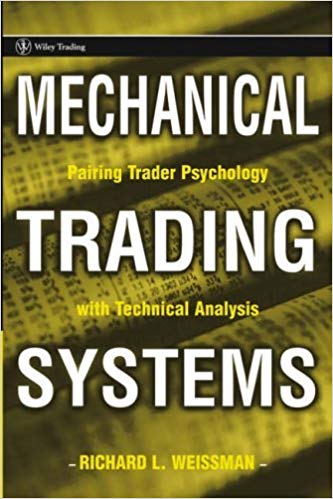
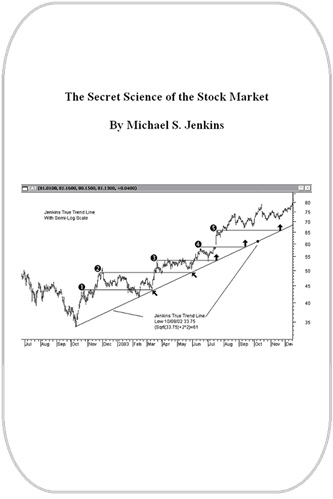
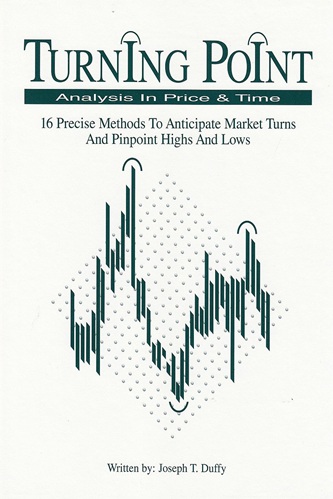
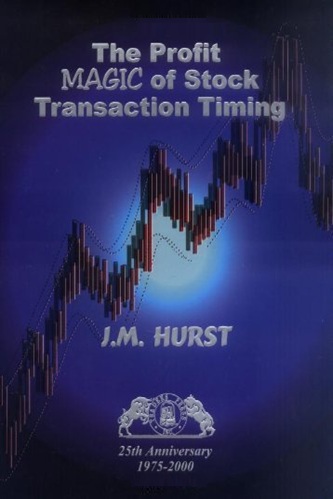
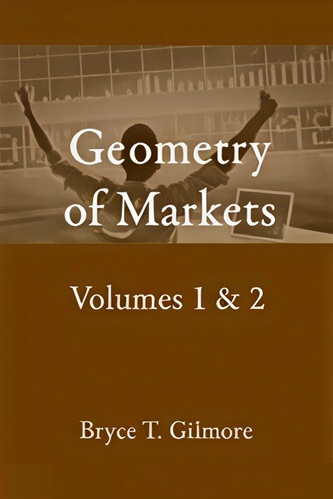
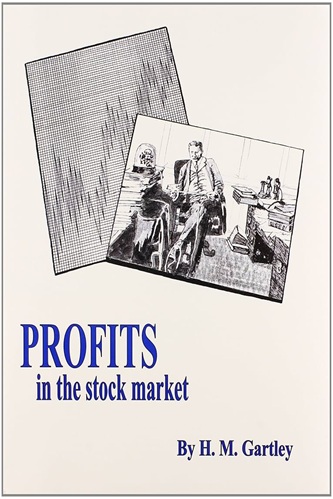
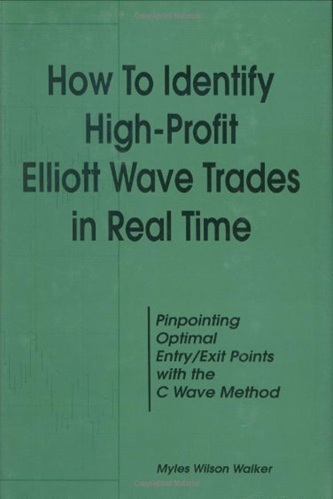
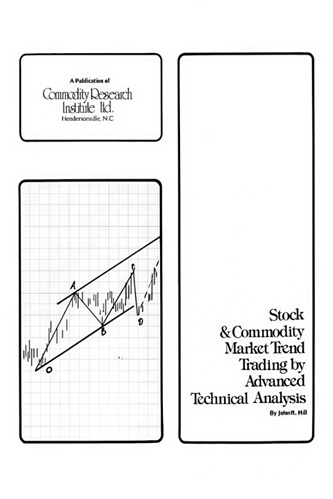
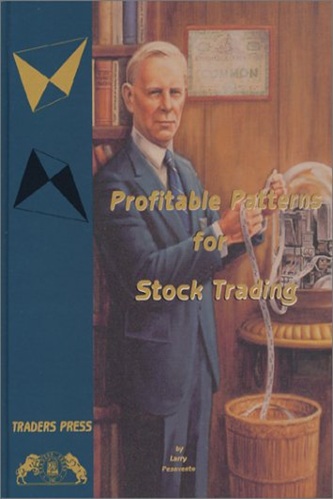
Raul Elliott (verified owner) –
This book is an excellent book for anybody with an interest in investing money, either professionally or personally. It is very educational on the mechanics and thought processes that traders go through, and is a breath of fresh air confirming that investing is nota ‘quick-rich’ scheme, but one that takes a plan, patience, and follow through. I’d highly recommend reading this entertaining book, and benefiting from Mr. Weissman’s experiences and knowledge!
Kiara Beasley (verified owner) –
I didn’t grasp many of the technicalities pertaining to system trading (I don’t trade or aspire to trade mechanical systems) but it is a wealth of generalized trading knowledge nonetheless. It is an inspiring book and a great confidence builder for me, confirming that I am on the right track regarding discipline and psychology and that, with persistence, success will come.
Larry Harding (verified owner) –
This is the only trading book you will ever need – it covers trader psychology, system development, technical analysis and price risk management. It deserves to share the shelf with classics like Market Wizards and Reminiscences of a Stock Operator. I wish it had been published at the beginning of my trading career!
Ocean Dalton (verified owner) –
If you trade, this book is worth every penny of the price. It maps out the whole spectrum of trading systems based on time frames and personality traits. I hope that it will finally force sellers of trading systems to “raise the bar” from where they are now – which assumes that “one system fits all”, to where they should be, “let me build a system that matches your trading style”. –
Paulina Todd (verified owner) –
Anyone whosse spend years trading anything from commodities to stocks, bonds, futures, etc., etd, etc., knows every trick, every system, every damn cliche that’s come down the subway line. And it’s exhausing parsing through the same nonsense year after year only to find the same systems and information you pored over the year before. To everyone who trades I tell you it’s all right to grow up now, read Richard Weissman’s book and trade–and profit–like an actual adult. For God’s sake take a minute and actually think about the information he’s developed for you and use it like you’ve just found the teacher’s edition in your high-school statistics class. Otherwise, just read the book of the month, and continue trading your soggy tear-off Monopoly pieces from the sides of your soggy McDonald’s cup in the wild hope of bring home a free order of large French Fries.
Free Yourself. Free Your Trading. Free Your Thinking. And For God’s Sake Grow Up.
Noa Costa (verified owner) –
This is a well written concise book. Of course if you are looking for the ‘holy grail’ of trading you won’t find it here…
That is for you to find and that idea pretty much sums up the true intention of this book.
Baylor Church (verified owner) –
If you are looking for a get rich quick scheme where you get ready made systems that will turn your measly $2K into $500K in a year, keep searching.
How refreshing that this author has avoided the temptation to sell tons of books by promising that mechanical trading systems presented in a book will accomplish this ridiculous claim!
Instead this book teaches you how to build mechanical trading systems. Not only does it provide readers with tools that are applicable to all systems (trending, mean reverting, etc.,), but it also shows you how to build these systems according to your individual trading personality.
Finally it avoids the typical trader “war stories”. Instead of colorful, useless stories of the crash in 1987, this book actually sticks to the point… teaching you how to develop systems that fit your personality.
Adan Dougherty (verified owner) –
Page xiv says it all: “Although the proprietary strategies I personally trade differ from those employed in this book….”. This is an overly simplistic, pathetic portrayal of mechanical trading systems that do not work and will not work. The book is overly technical in some areas, assumes a programming knowledge (e.g., metastock), and is generally a great sleep inducer. I am sorry I bought it, even at the discount.
Beau McFarland (verified owner) –
I find it refreshing that this is NOT a how to beat the market and get rich quick book. Richard Weissman is a trader who knows how to make disciplined trades while managing his risk and his emotions. He makes it very clear that this is not the same as investing; instead his process is focused on exploiting short-term trends and break outs using a mechanical system that strips the subjectivety and emotion from the trade. He also discloses that the proprietary strategies he personally trades differ from those employed in the book (as another reviewer notes). That’s not the point. It’s up to you to build your own strategy that fits your style, risk appetite and current market conditions. Weissman is giving you the guidance and discipline to achieve this since no techincal strategy works all the time and requires refinement as you become more experienced.
I recommend this for the serious trader who wants to learn more about risk-managed trading.
Ricardo Pearson (verified owner) –
“Mechanical Trading Systems” is a masterpiece for any trader. Without question, Weissman’s strategies exceed that of any other author on the subject by leaps and bounds. He articulates the delicate and ellusive dynamics of the trading-mind from his own experience and clearly lays out a series of checks and balances that completely circumvent personal financial disaster. With this wisdom a trader can probe, investigate, and penetrate the market without psyching himself out. This takes guts that rival those of Patton or Julius Caesar because one can loose everything — no laughing matter. For me, “Mechanical Trading Systems” can be placed up there with the works of Plato, Darwin and Copernicus. If it weren’t for Weissman’s insight, depth, and wisdom of the innermost workings of the human mind I would not own my new home or college tuition!
Sierra Bautista (verified owner) –
As every trader knows, there’s a wide gamut of books available about our passion, running from the ridiculous to the outstanding. This book is one of the best examples of a truly useful approach, blending deep systems thinking with insights on trader psychology. Weissman has clearly experienced the quest for a system that works, as he outlines not just what to do, but why it works and what it means about trader psychology and behavior. His overview of trading systems is thorough and comprehensive, and will be very helpful for those who’ve seen all the esoteric indicators but need some guidance on applying them, as well as for experienced traders who seek deeper understanding of a disciplined, systemetized approach that minimizes destructive emotions. For those “random walk-ers” who believe that technical analysis is a myth, Weissman clearly describes what the charts tell us about the trader on the other side of the trade, and the professionals who try to mask their actions but can’t hide from the tape. Clear and friendly style, and obvious real-world experience, differentiate this from the torrent of “Day Trading for Fun and Profit” books that either retread the basics or offer dense and useless “Fibonacci retracements during a solar eclipse” approaches. Buy, read, and learn…then apply and improve your results!
Alisson Gordon (verified owner) –
Save your money! I was very disappointed! I’ve been a student of technical analysis and mechanized trading methodologies for years, and Mr. Weissman’s book presents nothing new. He mostly references previous works (some classical) by such authors as Perry Kaufman, John Murphy, Robert Pardo and Welles Wilder. He, of course, references his own publications. The few methods he does present are poorly explained and have been better developed, tested and documented by such other excellent authors as Martin Pring, and Colby and Meyers. I have donated Mr. Weissman’s book to my local library. Maybe some beginning student of technical analysis will find it useful.
Kenji Herman (verified owner) –
I am a profitable trader. I bought this book for the promise of covering mechanical systems. Well, the book presents nothing new and useful. Its just a bunch of systems using RSI and stochastics that anyone could have done themselves. The systems are only marginally profitable and have huge drawdowns, just by sheer luck anyone could create similar systems. No equity curve is ever shown. This book is useless.
Skylar Henderson (verified owner) –
Its true: Want to know yourself? Develop a trading system, test it, put your money on it….. AND TRY TO FOLLOW IT.
WARNING : This is not for the weak…
Serenity Sherman (verified owner) –
“God forbid a fairly analytical book on TA minus all the folksiness and equivocation. Great read and definitely worth the time for someone who is at best suspicious of TA. ”
Aniya Doyle (verified owner) –
Only now I got the idea of buying some books about automated trading.
My problem was the programming language. I did my backtesting with Excel and EFS (eSignal) and sometimes with MetaStock which is pretty much like Excel in my opinion.
Programming language doesn’t really matter. If you want to write codes and backtest them you have to run a trading software first. Your trading software dictates your programming language. Then you’re browsing the support forums for help on that language, and for help on finding profitable strategies as well.
Reading other peoples’ questions and answers gave me a lot of new ideas for new strategies or for modifying existing ones. I have about two dozens strategies in my folder to modify to my needs and liking and then to backtest them.
So this book didn’t come up with anything new to me. The strategies presented here are very basic and simple and almost all of them are based on technical indicators NOT on price action (except for one little code which should give the reader/trader a start for better ideas). Also there aren’t really much ideas at all here. This book is small. The main premise of this book is to give the reader basic ideas to build upon, e.g. the author encourages the reader to test other exit conditions. This is why I think it’s for beginners.
This book is good in telling you which type of strategy would suit you best when you’re a long term investor or a short term trader.
I’d like to give this book three stars really because the author’s take on psychology is actually really good.
But then the last chapters on system development, analysis and optimization are boring and too general. All in all this book is much too general. And I think those 5 Star reviews are mostly overrating.
Better read books by Perry Kaufman or Thomas Stridsman if you are serious about writing codes or have already some coding experience.
I also advise you to browse your software’s help and support forums.
Sorry Mr Weissman.
Annika Sloan (verified owner) –
Excellent companion with Trade like a Casino. Invaluable to aspiring quants/systems traders. Gives basic systems & porfolios that, if applied as-is, would generate $$ far exceeding the book’s price.
Ayleen Henderson (verified owner) –
This book has some interesting, well researched and concluded ideas on trader psychology which make this title worth the spend. The mechanical trading system aspects though are not brought together well and in fact it is difficult to grasp what the author is saying at times.Perhaps in a future revision the author will join the dots a little for the common man?
Elena Walls (verified owner) –
we all know that a big part of trading success is psychology. Over the years, I have read many books on this subject to improve my trading results, including books from mark Douglas, Alex Elder, marcel Link, william eng, etc. Even books from Livermore, Bill Oneil, Stanley Kroll and Alan Farley has good sections on trading psychology. But after all the above mentioned authors, the best trading psychology I had seen so far is from this book. Believe me, it is that good.
Technical analysis has been around for a long time and pretty much everyone knows about everything within it. of course, when everyone else knows about it, it is not worth knowing any more. I see one or two stars comments that there is nothing new in this book on technical analysis, which is, of course, correct.
What is important, is how to pair your psychology to trading. What are you good at? what makes sense to you? you have to keep doing what you are good at doing, and that is the key to trading success. you have to remain open minded, and flesible enough to buying breakout and buying retracement depends on different market condition. That, will make you successful
Stanley Zamora (verified owner) –
Thorough, sometimes complicated to understand but still full of useful tips that might help traders become consistent and disciplined. Another of the “must read” titles.
Kashton Morales (verified owner) –
It is a so so book. Now it is very easy to design and develop a such trading system purely based on well defined technical indicators and optimize the system to maximize the possible profit.
I would like to see more advanced techniques but that kind of book may cost a lot more money.
Lilian Leonard (verified owner) –
This book shows traders how to build a trading system that fits them. The books takes readers on the choices of time frame that will be employed and whether it will be a mean reverting or trend following system. Types of technical indicators are explained channel breakouts, oscillators, moving averages, MACD, ADX, Bollinger Bands, and many others along with how best to use them based on system philosophy.
Richard Weissman does the crucial job of explaining the psychological profile needed to trade the different robust methods that can be used by traders. Regardless of back tested results some people can not handle draw downs or low winning percentages when their system is live with real money. Richard explains what the trader is getting them-self into.
The mandate of the book is that a system must have a large enough sample size to show that it is profitable through multiple market environments and has almost no risk of ruin with proper position sizing.
This book does a great job of covering how to implement a mechanical trading system and gives many examples of systems. It also covers the psychological need for discipline in system execution and risk management.
This book is just packed with useful information for traders at all levels. I highly recommend this book. Richard Weissman continues to be one of my favorite trading authors and an inspiration to aspiring traders.